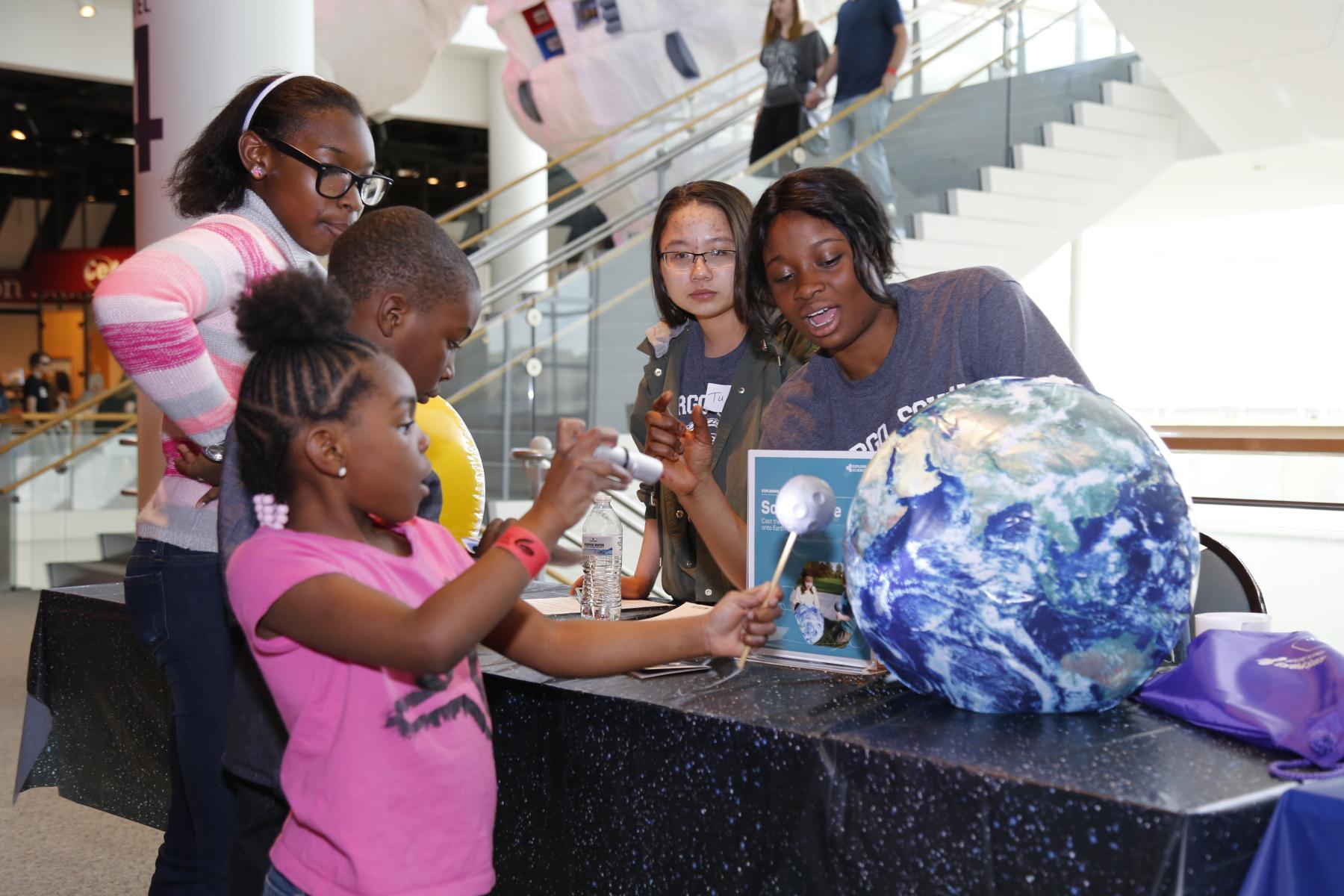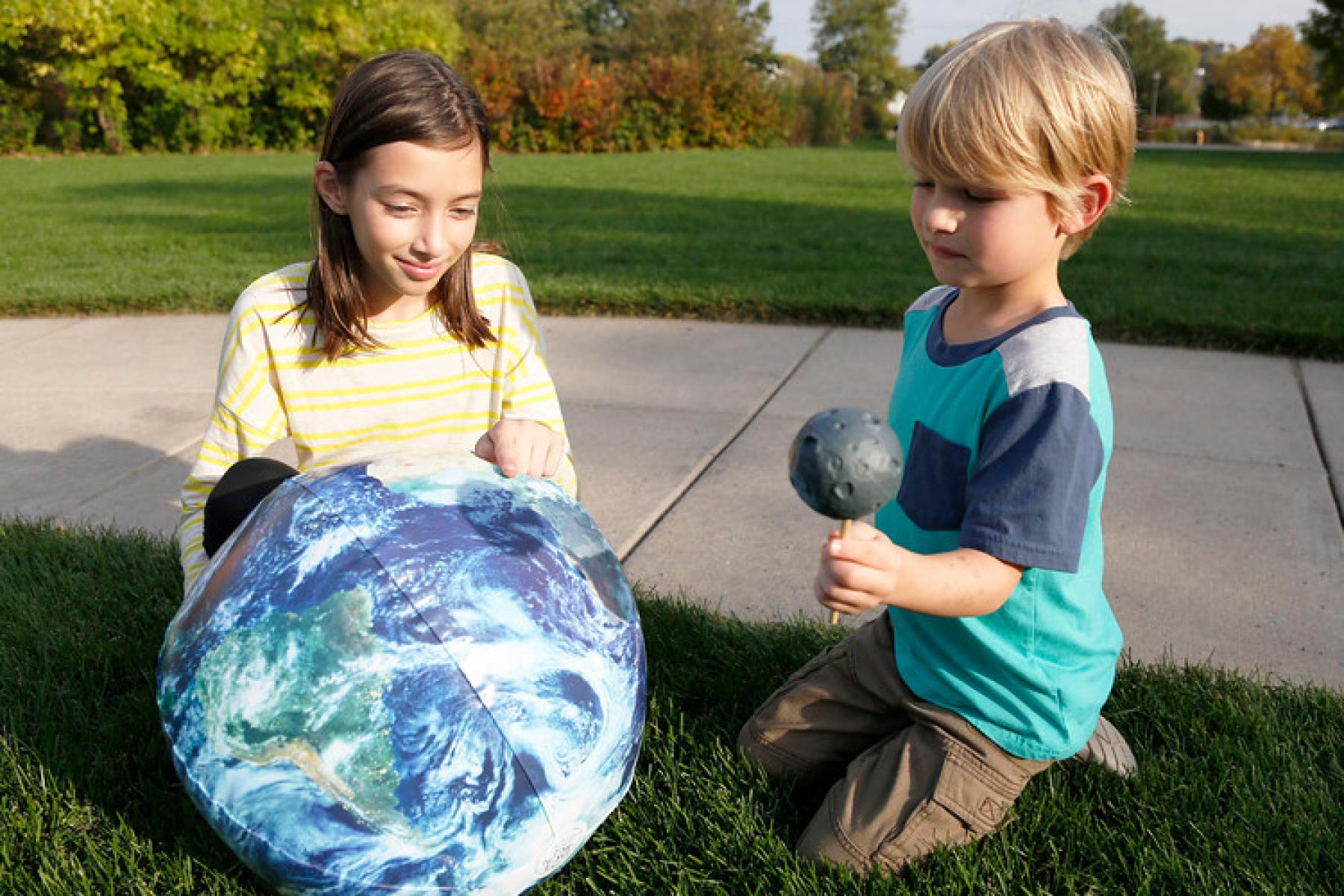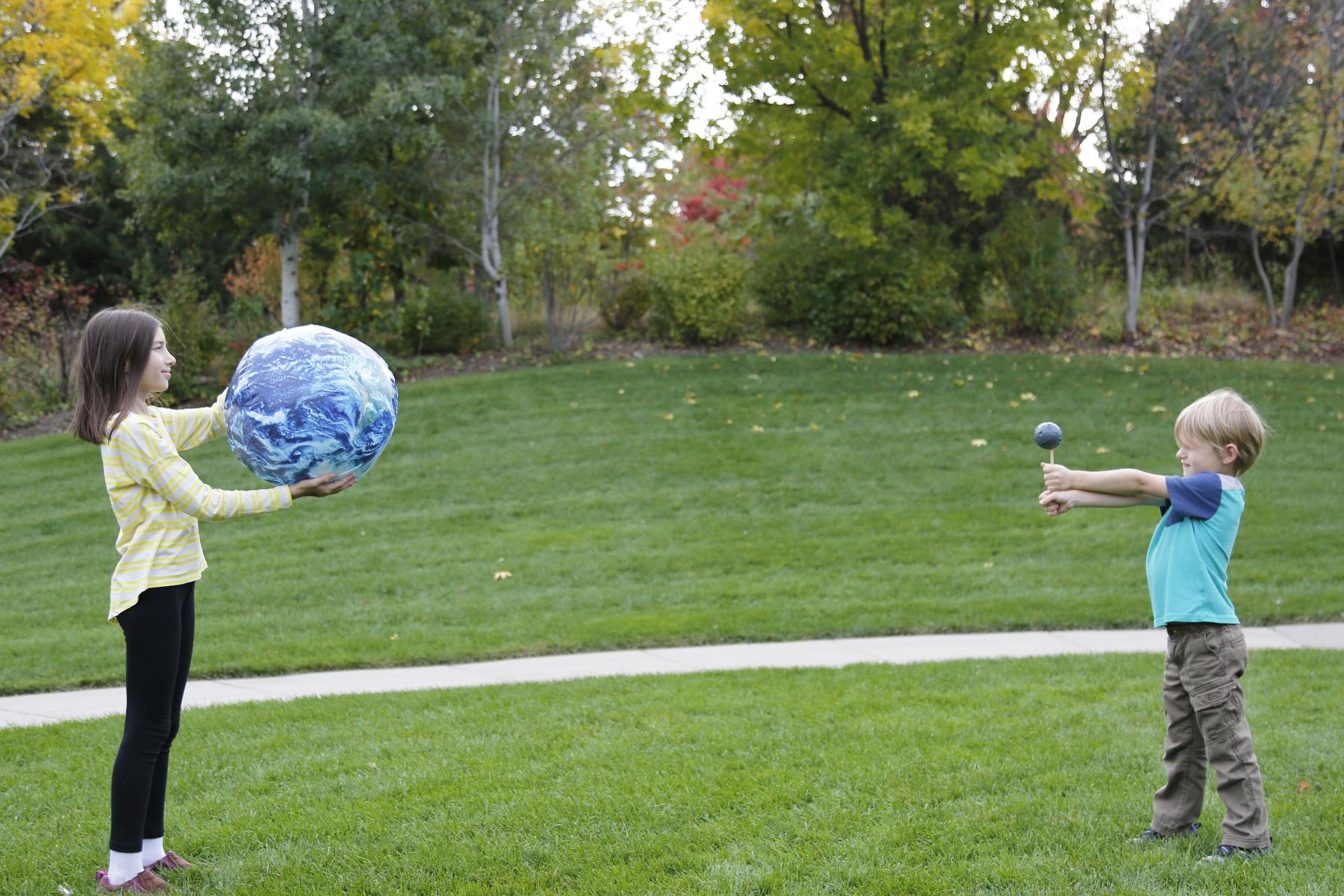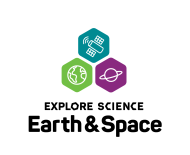DESCRIPTION
"Exploring the Solar System: Solar Eclipse" is a hands-on activity demonstrating how the particular alignment of the Sun, Earth, and Moon can cause an eclipse. Visitors investigate the positions of these objects to create shadows and learn about solar eclipses.
This activity was designed specifically in advance of the total solar eclipse that will traverse the continental United States in August, 2017, but can be used anytime.
DESCRIPTION
"Exploring the Solar System: Solar Eclipse" is a hands-on activity demonstrating how the particular alignment of the Sun, Earth, and Moon can cause an eclipse. Visitors investigate the positions of these objects to create shadows and learn about solar eclipses.
This activity was designed specifically in advance of the total solar eclipse that will traverse the continental United States in August, 2017, but can be used anytime.
TRAINING VIDEOS
OBJECTIVES
BIG IDEA
A solar eclipse occurs when the Moon moves between the Sun and Earth, casting a shadow on Earth—but conditions have to be just right for this to happen.
LEARNING GOALS
A solar eclipse occurs when the Moon moves between the Sun and Earth, casting a shadow on Earth.
A solar eclipse is a rare and beautiful event.
People have observed and tried to explain solar eclipses for thousands of years.
DOWNLOAD FILES
- Exploring the Solar System: Solar Eclipse activity guide (PDF)
- Exploring the Solar System: Solar Eclipse facilitator guide (PDF)
- Exploring the Solar System: Sizing Up info sheet (PDF)
- Exploring the Solar System: Solar Eclipse table sign (PDF)
- Exploring the Solar System: Eclipse postcard (PDF)
- Exploring the Solar System: Eclipse poster (PDF)
- Exploring the Solar System: Solar Eclipse activity guide (Spanish) (PDF)
- Exploring the Solar System: Sizing Up info sheet (Spanish) (PDF)
- Exploring the Solar System: Solar Eclipse table sign (Spanish) (PDF)
- Exploring the Solar System: Eclipse postcard (Spanish) (PDF)
- Exploring the Solar System: Eclipse poster (Spanish) (PDF)
Credits
The Science Museum of Minnesota
This material is based upon work supported by NASA under cooperative agreement award number NNX16AC67A. Any opinions, findings, and conclusions or recommendations expressed in this material are those of the author(s) and do not necessarily reflect the view of the National Aeronautics and Space Administration (NASA).
Creative Commons Attribution Non-Commercial Share Alike 3.0 United States (CC BY-NC-SA 3.0 US).
View more details

NISE Network products are developed through an iterative collaborative process that includes scientific review, peer review, and visitor evaluation in accordance with an inclusive audiences approach. Products are designed to be easily edited and adapted for different audiences under a Creative Commons Attribution Non-Commercial Share Alike license. To learn more, visit our Development Process page.




